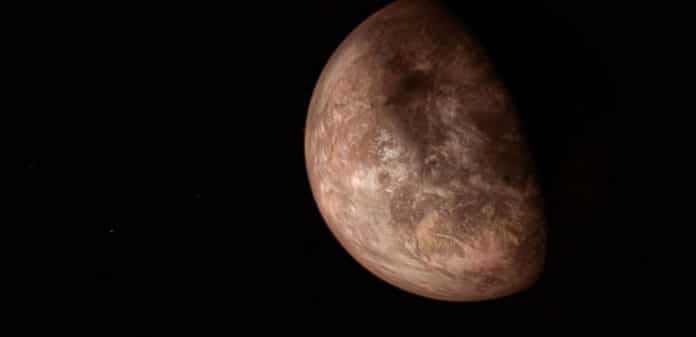An international team of astronomers recently discovered a new “warm Jupiter” alien world transiting the main sequence late F-type star on an eccentric orbit.
Astronomers named this exoplanet as TOI-677 b, which is 20 percent bigger and more massive than Jupiter.
Warm Jupiters are a class of gas giant exoplanets that are inferred to be physically similar to Jupiter but that have short orbital periods. TOI-677 b is the newest addition to the list of known warm Jupiters.
It was first spotted by NASA’s TESS (Transiting Exoplanet Survey Satellite) and then confirmed after additional investigation. It’s big, even larger than Jupiter, but unlike our gas giant, it orbits its host star a much shorter distance.
Thought to be around 23 percent more massive than Jupiter, the TOI-677 b completes an orbit of its star every 11.23 days. It has a radius of about 1.17 Jupiter radii and a mass of approximately 1.23 Jupiter masses. Taking into account the TOI-677 b’s proximity to its host, the astronomers calculated that the planet has an equilibrium temperature at a level of approximately 1,252 Kelvin.
Astronomers estimated its equilibrium temperature to be approximately 1,252 Kelvin. The star has a mass of around 1.18 solar masses, and its radius is about 28 percent bigger than that of our sun. Observations propose that the object is almost 3 billion years old.
Astronomers explained, “Warm Jupiters can be formed via secular gravitational interactions with an outer planet followed by tidal interactions with the star in the high eccentricity stage of the secular cycle. In this context, Dong et al. (2014) predict that to overcome the precession caused by general relativity, the warm Jupiters produced via this mechanism should have outer planets at relatively short orbital distances that can be detected with a radial velocity monitoring.”
“At the moment it is too early to draw a final conclusion about the presence of an outer companion in the TOI-677 system. More studies are needed to determine the exact nature of the long term radial velocity that was reported in the paper.”
The finding is detailed in a paper published on November 13 on arXiv.org.
